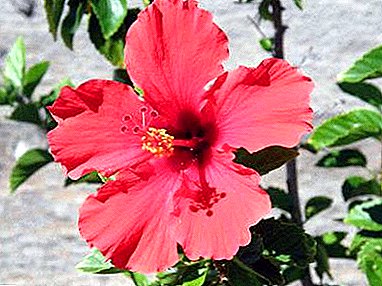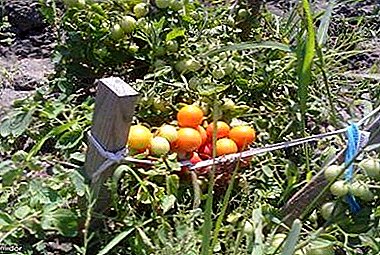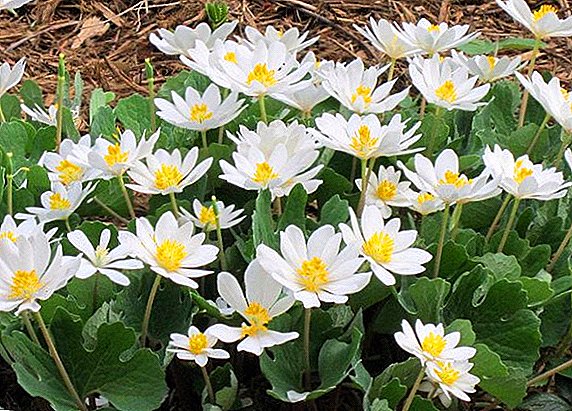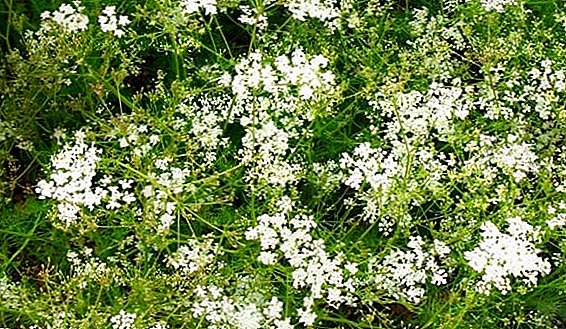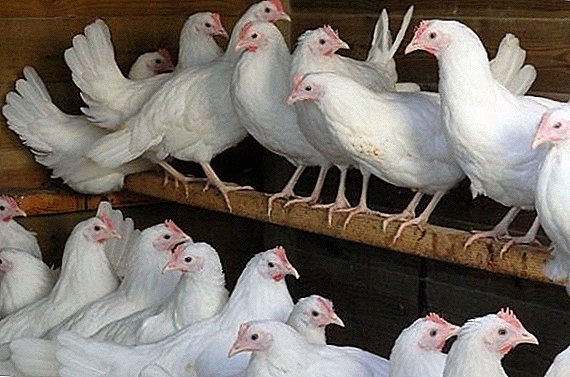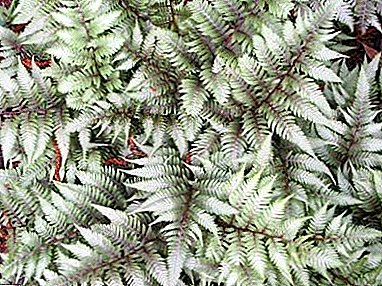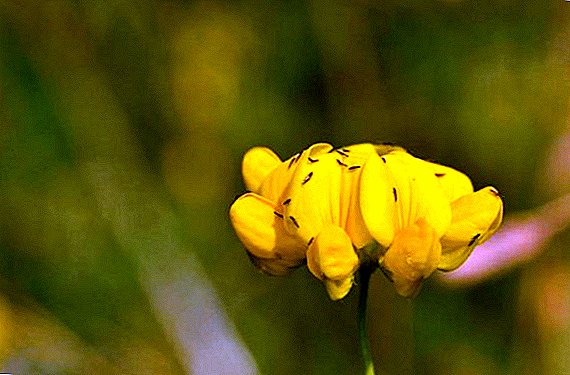 Thrips are the most widely known plant pest species. They affect both agricultural and ornamental crops, and indoor flowers. Surely many people have come across them, and everyone is interested in the question: how to protect their plants from these insects.
Thrips are the most widely known plant pest species. They affect both agricultural and ornamental crops, and indoor flowers. Surely many people have come across them, and everyone is interested in the question: how to protect their plants from these insects.
In our article you will find a detailed description of thrips, clearly see how they look in the photo, and learn what methods of prevention and control there are.
Pest description
Thrips, bubbly and fringed wings - All these are the names of the same insects. There are many (more than two thousand) species and genera of this pest. Only in the territory of the former USSR, about three hundred species of this parasite can be counted.
These are small, oblong beetles of black, gray and brown colors. Their "growth", depending on the species, ranges from half a millimeter to one and a half centimeters. Most often they are 1-2 mm long. Jaws are piercing-sucking type. Their paws are short, running, each of them has a bubble-like growth at the base. This explains the name "bubbling".  The wings can have 2-3 longitudinal ribs and a long hair fringe around the edges. Hence the name "fringed wing". The abdomen consists of eleven segments. In the process of development, thrips go through several stages from egg to imago. "In the age" of the larvae they are devoid of wings and have a beige or gray color.
The wings can have 2-3 longitudinal ribs and a long hair fringe around the edges. Hence the name "fringed wing". The abdomen consists of eleven segments. In the process of development, thrips go through several stages from egg to imago. "In the age" of the larvae they are devoid of wings and have a beige or gray color.
Did you know? Thrips are believed to be one of the most ancient insect species. There is even the opinion that they are the ancestors of all the klopoch.
Types of thrips
It is quite difficult to determine the appearance of these insects because of their small size. However, there are many species that are very dangerous for cultivated plants. They infect them with various viruses and diseases, dehydrate the leaves, flowers and fruits, and also pollute them with secretions.
The plant-eating species of this pest are mainly found, but there are also predatory ones. They feed on the larvae and eggs of their herbivorous relatives.
- Multiple thrips - has a dark brown color, slightly longer than a millimeter. Plant in the flowers of many ornamental and fruit plants. It harms not only flowers, but also emerging ovaries.

- Western Flower (California) Thrips - pest, which in our area can be found mainly only in greenhouses. It is considered a tropical species. Very dangerous for vegetable, fruit, berry and ornamental plants.

- Tobacco thrips - very small, up to one millimeter long bug. Some females of this species are easily distinguished by their light yellow color, while the others are brown in color. Dangerous for many flowers and vegetables. Inhabits the warm regions of the country, in the north it is found only in greenhouses.
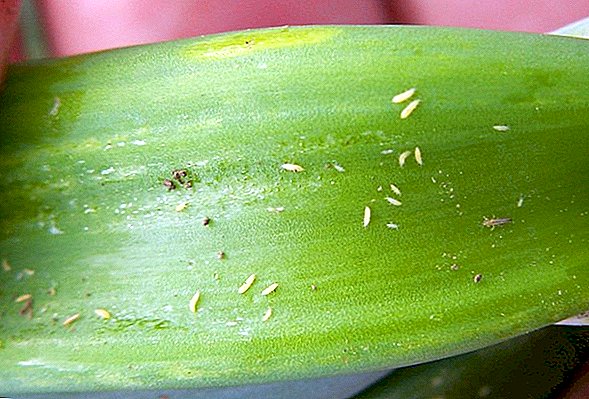
- Bulb thrips - a widespread insect in our country. From the name it becomes obvious that its habitats are common onions and scales of onions of a different type of lily plants. It has a dark brown color and "growth" up to two millimeters.
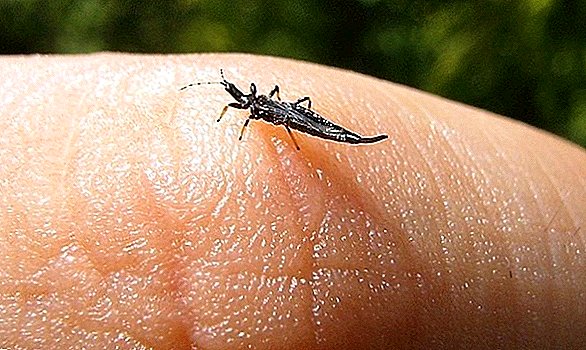
- Rose Thrips - lives on the leaves and flowers of Rosaceae and some other plants. Representatives of this species can be distinguished by their brown color and very small sizes (up to 1 mm). Consider both closed and open soil acceptable to yourself.
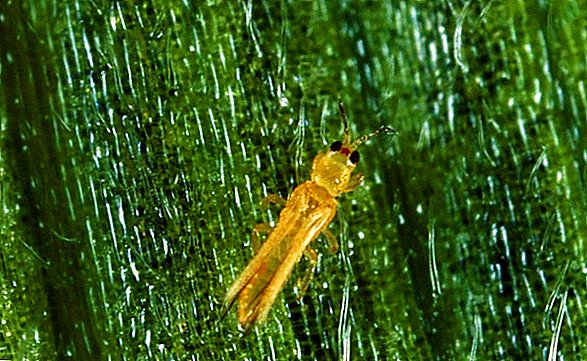
Did you know? Mostly thrips can't fly. Their underdeveloped wings do not give them that opportunity. However, there is one type - Bread thrips - capable of flying from field to field with whole clouds.
The first signs of insects
It is rather difficult to identify the first foci of thrips damage, since these pests lead a hidden lifestyle and can live only on one plant of the group.
However, there are fairly obvious signs of infection by these insects:
- Small punctures in the form of dots on the leaves of your indoor flowers are a sign that these parasites drank juice from them.
- If the leaves of the plant suddenly become discolored, this can also indicate the presence of pests.
- On the surface of leaves and flowers you can see spots of brown, brown or silver flowers - these are physical damage caused by these insects.
- At the started form of infection there is a dying off and falling off of foliage.
- The deformation of the trunk, the buds and the flowers is another evidence that the fringed wing has settled on the plant.
- Well, if, upon careful examination, you notice traces of sticky secretions and black dots on your flowers, these are the waste products of these insects, meaning that thrips live and reproduce there.
Important! Thrips like dry and warm air, so they most often infest on plants that are not sprayed and rarely watered.

Methods of struggle (folk, chemical)
There are several effective ways to combat this type of parasite. But insects living in the garden, in the fresh air, are different from the "home", respectively, and you need to deal with them in different ways. Below we will separately consider the methods of struggle with thrips on indoor plants and on open flower beds and garden beds.
Fight in the garden
- Chemical processing There are special drugs that kill pests, such as "Agravertin", "Karate", "Intavir", "Fitoverm", "Aktellik" and others. These may be powders, ampoules or tablets. Poison is diluted according to the instructions and the resulting mixture is treated with a plant and necessarily the soil under it. After that, the infected plant is enveloped with polyethylene and left for a day. After a week, the treatment is repeated.
- Biological method. This method involves the use of predatory mites, such as Amblyseius. This Californian tick, which has a red-brown color, is rarely more than half a millimeter long, but one can destroy up to a hundred thrips. Such insects in large quantities are bred in special laboratories. There they can be purchased. This method is very effective and safer (compared to chemical), especially when it comes to vegetable and fruit plants.
- Folk methods. Many gardeners are advised to treat plants with garlic infusion, as thrips can not stand the smell of garlic. You can also insist onions or celandine for this purpose. Another option would be to put a container with crushed garlic or turpentine next to the infected shrub and cover it with a film. After a few hours you need to check the result. It is also worth trying to install adhesive stripes (blue and yellow) as traps directly near the infected shrub or bed.
Using folk methods of pest control such as: ants, aphids, moles, mole rats, slugs, May beetles, weevils, Colorado beetles, leafworms, whiteflies, dustworms, carrot flies, onion flies, wasps, wireworms - you should still follow safety techniques .
How to deal with thrips on houseplants
The appearance of thrips on indoor plants scares all the housewives, but this can be corrected if you know how to deal with them.
- First of all, it is necessary to remove the infected flower from the rest in order to prevent the "relocation" of one plant's pests to another. It is necessary to carefully remove the surface on which the pot stood, using disinfectants.
- For indoor flowers, too, developed chemicals that destroy pests. These include "Mospilan", "Apache", "Dantop" and others. These funds are called neurotoxins and require daily use according to the instructions.
- Chemicals will also help, for example: Regent, Kiron, Pegasus, Bankol, Intavir. The most effective, but very dangerous drugs, are called "Marshal", "Nurell-D", "Aktellik" and "Bi-58". It is necessary to use them very carefully, not allowing the possibility of a burn or an allergic reaction in you and your household.
Important! Do not forget that most of the parasites live on the flowers of indoor plants. Therefore, when an infection is detected, it is worth getting rid of all the flowers, as well as the top layer of earth in pots with infected pets.
- If the case of infection is not very neglected, combating thrips with folk remedies will be effective. You can lather the flower with soap and, wrapped in a bag, leave it for a couple of days. Spray the flower with a solution of garlic or onion. Treat leaves with a mixture of water and flea shampoo. An effective solution is an aqueous solution of mineral or olive oil. You can also use infusions of flowers marigold, chamomile, celandine, tobacco, tomato and potato leaves, dandelion roots. Or install a container of turpentine near the pot and leave for a few hours, after wrapping all of polyethylene.
Preventive measures
If you collect the earth for your colors yourself, it must be sterilized. This will help you such tools as "Anthon-F" or "Nemabakt." It is worth regularly moisten the earth and irrigate the flowers.
With purchased flowers, these bugs can also get into your home. Therefore, put the bouquets in a vase separately from the rest of your plants. And it is better to transplant the flowers in the pots to the disinfected land.
Pests can accidentally fly into the window; sticky traps can be placed in this case. To scare off parasites from your plants, regularly spray them with infusions of strong-smelling flowers (celandine, tobacco, marigolds) thrips do not tolerate this smell. It is also worth occasionally arranging water procedures for flowers and rinsing them out of the shower. This will help to be sure that there can be no “settlements” of parasites on plants. And most importantly - give your flowers more time, spare no effort to regularly inspect the leaves and stems, and then thrips will not have a chance to attack your plants.








